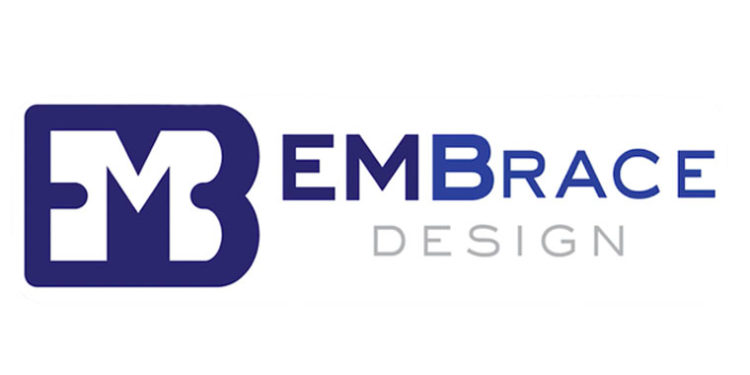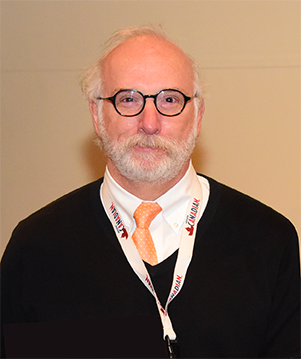 Dr. Denis J. DiAngelo is a Distinguished Professor of Biomechanics and Director of the BioRobotics and Rehabilitation Laboratory in the Department of Orthopaedic Surgery and Biomedical Engineering at the University of Tennessee Health Science Center (UTHSC), as well as Co-Founder and President of medical device company EMBrace Design. He joined UTHSC in 1993 after receiving his master’s degree and Ph.D. in biomechanical engineering from McMaster University in Ontario, Canada.
Dr. Denis J. DiAngelo is a Distinguished Professor of Biomechanics and Director of the BioRobotics and Rehabilitation Laboratory in the Department of Orthopaedic Surgery and Biomedical Engineering at the University of Tennessee Health Science Center (UTHSC), as well as Co-Founder and President of medical device company EMBrace Design. He joined UTHSC in 1993 after receiving his master’s degree and Ph.D. in biomechanical engineering from McMaster University in Ontario, Canada.
The “EMB” in EMBrace stands for “Enabling Mobility through Bracing.” “That’s what is unique about our technology compared to traditional stabilizing braces,” states Dr. DiAngelo.
More than five million people suffer from back pain. Steroid shots, pain medication, and traction therapy are standard treatment options, but all have limitations. Doctors often reserve surgery as a last resort. Physical therapy offers promise for reducing back pain by helping patients build up their core strength. However, pinched nerves and damaged discs can limit a patient’s ability to complete the prescribed exercises and prevent the patient from reaping the benefits of his or her physical therapy program.

Dr. DiAngelo and his graduate students discovered a solution that not only reduces acute back pain but restores a patient’s ability to perform everyday activities and improves quality of life. Their innovation is the START (Spinal Traction and Rehabilitative Therapy) Brace, a dynamic lower back brace that offloads the spine and allows for full range of movement. The brace is geared primarily toward younger, active patients who are having a hard time completing physical therapy because of their back pain.
Conventional traction braces are rigid and restrict movement, making it difficult for a patient to bend over or twist their body from side-to-side. Discomfort and a brace’s constrictive nature make patient compliance a problem with this form of treatment. The START Brace incorporates articulation into its design that stabilizes and supports the spine while allowing the wearer to move in multiple directions. Extensive laboratory testing by Dr. DiAngelo and his graduate students backs this ‘traction-on-the-go’ device. UTRF has one issued back support patent, has filed another patent application on the START Brace, and granted EMBrace Design an exclusive option to the intellectual property upon its establishment in 2017.
“Mobility has the ability to restore function,” says Dr. DiAngelo. “The START Brace, coupled with physical therapy, helps patients complete their exercise programs, build strength, and go on to have a positive recovery. It may even eliminate or delay the need for surgery in some patients.”
Dr. DiAngelo’s work with braces caught UTRF’s attention early on. He received a UTRF Maturation Fund grant several years ago to support research and development of an early stage back support device. Last year, Dr. Richard Magid, Vice President of UTRF for UTHSC, approached Dr. DiAngelo about applying for ZeroTo510. ZeroTo510 is a 90-day medical device accelerator based out of Memphis, Tennessee that provides access to experts, mentors, and training to help participants navigate the start-up process. Dr. DiAngelo applied and was chosen to participate in the ZeroTo510 accelerator’s 2017 cohort.
“Participating in ZeroTo510 was a big step toward commercialization for EMBrace Design,” says Dr. Magid. “Their START Brace has the potential to improve the lives of many who suffer from back pain.”
Currently, the START Brace is going through clinical trials to validate the technology and obtain hard data showing the device works as intended. A soft launch for the START Brace could happen as soon as Fall 2018. In the meantime, Dr. DiAngelo and Mr. Young are looking at additional funding streams, such as applying for a Small Business Innovation Research grant and attending trade shows and conferences to meet face-to-face with potential investors. Dr. DiAngelo’s lab is also working on several other brace designs that may one day join the START Brace in EMBrace Design’s product line.